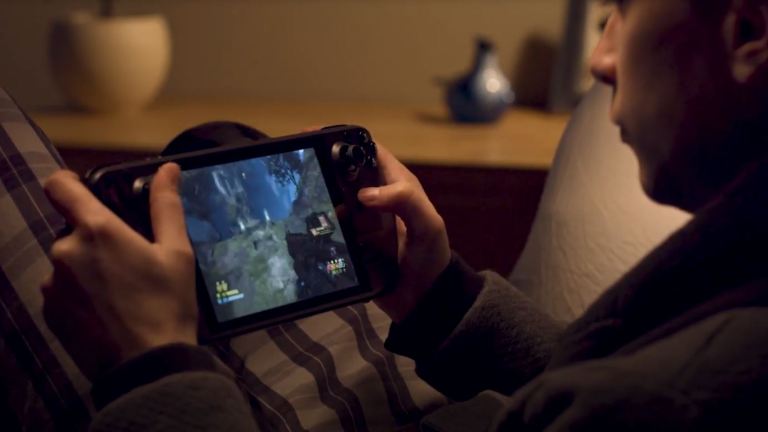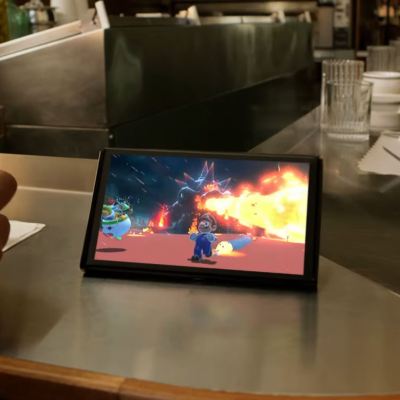Can Steam Deck Succeed Where the PlayStation Vita Failed?
Is the Steam Deck the future of handheld gaming or a sleek revival of the ultimately failed PlayStation Vita?

While it’s understandable that Valve’s Steam Deck is already drawing comparisons to the Nintendo Switch, the Steam Deck’s closest (and most important) comparison in the history of video game handhelds has to be the ill-fated PlayStation Vita.
Released in Japan in December 2011 as the follow-up to the PSP, the PlayStation Vita was positioned to be the direct challenger to the Nintendo 3DS (which debuted earlier that year). In retrospect, though, it feels more accurate to say that the PS Vita was designed to compete with the Nintendo DS. After all, Nintendo was still trying to sell people on the 3DS’ core gimmick during the course of its slow rollout (and would continue to struggle to do so during the handheld’s run), whereas the DS was still seen by many as the definitive handheld gaming device on the market and arguably the best handheld ever made.
On paper, the PlayStation Vita had everything it needed to defeat the DS and 3DS. It was significantly more powerful than either handheld, it featured an OLED screen (sound familiar?), it was designed to address most of the PSP’s biggest issues, and, most importantly, it was supported by the PlayStation team and their legions of fans, developers, and veteran engineers. The Vita had absolutely everything going for it and should have been the handheld that finally dethroned Nintendo or at least loosened their iron grip on the handheld gaming industry.
Yet, when the smoke cleared, the 3DS outsold the PS Vita by about 59 million units. Neither handheld came close to matching the Nintendo DS’ astonishing sales records. From a sheer sales perspective, the PS Vita was a failure. Some Sony executives tried to argue the handheld was ultimately doomed by the sudden rise of the mobile gaming market, but the truth of the matter is that most of the Vita’s biggest problems could have been addressed by the PlayStation team.
“Price” is somewhere near the top of any list of the PS Vita’s most preventable problems. While the PS Vita matched the 3DS’ launch price, it was significantly more expensive than the Nintendo DS at that time and was only about $50 cheaper than a PS3 or Xbox 360. It certainly didn’t help that the Vita’s memory cards were also quite expensive and that Sony made few official efforts to address the Vita’s price over the course of the handheld console’s lifespan.
In retrospect, that was the Vita’s biggest problem. One of the handheld’s best attributes should have been PlayStation’s support, but the fact of the matter is that the PlayStation team pretty much left the handheld to die just a couple of years into its run. They half-assed its backward compatibility support, they struggled to get first-party exclusives out the door with any sense of urgency, they never really figured out how to make the console’s PS4 remote play capabilities appealing, and they didn’t bother to release the kind of mid-cycle hardware upgrades that rescued the 3DS from its own terrible start.
The PlayStation Vita was supposed to be a way to be a premium console you could take with you, but within a couple of years, it essentially became a niche device praised by those who loved its collection of indie titles, design, Japanese exclusive games, and general capabilities but was ignored by pretty much everybody else. Sony greatly overestimated the global desire for a more powerful handheld, and they immediately paid a price for their mistake that they clearly weren’t prepared to deal with.
While every video game device ultimately forges its own legacy in terms of both the mass market and in the hearts and minds of individuals everywhere, it’s nearly impossible to talk about the PlayStation Vita and not immediately spot the frightening ways that failed handheld feels like the unfortunate predecessor to the Steam Deck.
Just as the PS Vita tried to challenge more established Nintendo devices, the Steam Deck is clearly building off the incredible success of the Nintendo Switch (even if both devices are fundamentally going for different things). Much like the PS Vita, the Steam Deck hopes to separate itself through its hardware capabilities, an improved screen, and a built-in library of titles. Sadly, the Steam Deck is also potentially burdened with a higher (perhaps too high) price point, late release date relative to its competition, and the “support” of a company that has historically struggled to support its hardware experiments to the degree that they need to be supported.
If you take a look at the history of companies that have tried to challenge Nintendo’s handheld (or handheld adjacent) hardware with more powerful and more expensive alternatives, you’ll find a tragic tale starring a variety of notable failures. The Atari Lynx, Sega Game Gear, PS Vita, and more all tried to topple Nintendo by seemingly doing the things Nintendo wasn’t, and each failed to offer a widely compelling alternative to the arguably more important things that Nintendo chose to emphasize.
That’s the oddest thing about making PS Vita and Steam Deck comparisons. While the line on the Vita has always been that it was a handheld “ahead of its time,” that doesn’t mean that the Steam Deck will somehow be the handheld of its time. We still live in an age where the handheld scene is dominated by mobile games and a Nintendo console that is clearly doing quite well. People online say they want a “Switch Pro,” but when you look at the success of the Nintendo Switch, the hype for the Switch OLED, and the entire history of handheld gaming, you wonder whether or not a more powerful handheld gaming device will ever be more than a premium item meant for a relatively small number of gamers.
Yet, there are other ways that the Steam Deck already emphasizes some of the things that eventually made the PlayStation Vita a beloved piece of handheld hardware with a cult fanbase.
Just as the PS Vita let players access a decent library of classic titles (even if that feature always needed work), the Steam Deck lets you play any classic PC game available via Steam (and even more outlets). The PS Vita benefited from the support of elite Japanese studios, and the PC gaming scene has been gaining the support of many of those same studios in recent years. The PS Vita was beloved for its power, options, and accessibility, and Steam Deck is seemingly built on emphasizing all of those features.
If Valve wants the Steam Deck to succeed where the PS Vita failed, they need to be willing to acknowledge whatever failures they may incur along the way and immediately address them. They also need to find a way to sell the Steam Deck to those gamers who helped turn the Switch into a “mainstream” hit as well as those who are still saving their money for a PS5, Xbox Series X, or just a new GPU. If they can find a way to do all of that, they may just achieve something that nobody else before them has quite been able to.
Then again, maybe that’s not the plan at all. Maybe Valve isn’t targeting gamers everywhere but rather those same gamers who passionately defend and support the PS Vita to this day for being the one device that gave them the things that nobody else in the industry bothered to give them at that time. It might not sound like the best business strategy, but when you’ve got what we like to call “Steam money,” making the best handheld possible for a smaller group of gamers who will grow to truly love it may not be a bad way to go.


